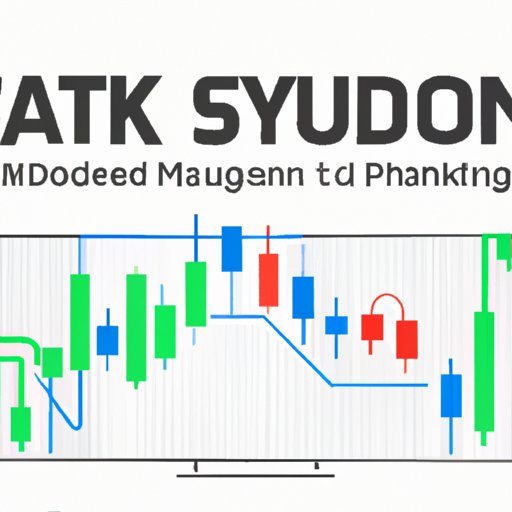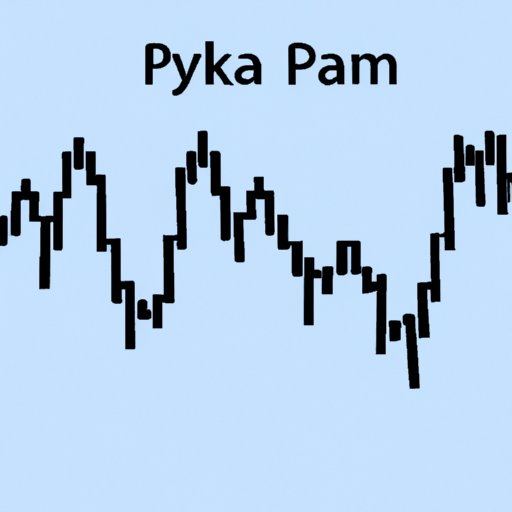Introduction
Python is a powerful programming language that has seen an increase in usage across many industries. In particular, the finance sector has embraced the use of Python for a variety of tasks, ranging from analyzing financial data to building automated trading systems. This article will explore some of the ways Python can be used in finance and provide resources for further study.
Overview of the Problem
Financial services are increasingly relying on technology to improve efficiency and accuracy. As a result, the demand for skilled developers with knowledge of the financial sector is growing. Python is a versatile language that is well-suited for tackling complex problems in the financial sector. It can be used for tasks such as financial data analysis, building automated trading systems, forecasting financial markets, and creating visualizations to analyze financial data.
The Benefits of Using Python in Finance
Python offers several advantages for working with financial data. Firstly, it is easy to learn and use. Its syntax is straightforward and the standard library provides a wide range of useful modules. Secondly, Python is open source, meaning that it can be freely modified and distributed. Finally, its wide range of third-party libraries makes it easy to extend the capabilities of Python for working with financial data.

Exploring Financial Data Analysis with Python
Financial data analysis involves the use of statistical methods to uncover trends and patterns in data. Python is a great choice for performing financial data analysis due to its extensive library of modules, which make it easy to manipulate, analyze, and visualize data. The following sections will explore the use of Python for financial data analysis.
Introduction to Financial Data Analysis
Financial data analysis involves collecting and organizing data from various sources, such as news outlets, government databases, and stock exchanges, and then using statistical techniques to uncover patterns and trends in the data. These techniques can be used to identify correlations between different variables, develop predictive models, or identify market opportunities.
Utilizing Python Libraries for Analysis
Python’s standard library includes several modules that are useful for financial data analysis. These include modules for working with numerical data (e.g., NumPy), manipulating dates and times (e.g., datetime), and accessing online financial data sources (e.g., pandas-datareader). Additionally, there are a number of third-party libraries available that provide additional functionality, such as scikit-learn for machine learning, matplotlib for data visualization, and TA-Lib for technical analysis.
Examples of Financial Data Analysis using Python
Python can be used for a variety of financial data analysis tasks, such as predicting stock prices, identifying correlations between different variables, and developing quantitative trading strategies. For example, you could use Python to analyze stock market data and identify correlations between different stocks. You could also use it to develop a quantitative trading strategy, such as a moving average crossover system, by writing an algorithm to generate buy and sell signals based on price data.

Building Automated Trading Systems with Python
Automated trading systems are computer programs that automatically execute trades based on predetermined rules without manual intervention. These systems can be used by traders to automate their trading activities, allowing them to focus on other aspects of their trading strategy. Python is a great choice for building automated trading systems due to its flexibility and ease of use.
Understanding Automated Trading Systems
An automated trading system is composed of two parts: a set of rules that define when a trade should be executed, and a program that implements those rules. The rules can be based on technical indicators, such as moving averages, or they can be based on more advanced techniques, such as machine learning algorithms. The program that implements the rules must be able to access financial data and execute trades according to the rules.
Writing Algorithms for Automated Trading Systems
Writing algorithms for automated trading systems requires both programming expertise and a deep understanding of the financial markets. It is important to understand how different types of markets behave and which indicators are most useful for making trading decisions. Additionally, the algorithms must be optimized for speed and accuracy in order to ensure that trades are executed quickly and correctly.
Implementing Automated Trading Systems Using Python
Python is a great choice for implementing automated trading systems due to its flexibility and wide range of libraries. The pandas and NumPy libraries are particularly useful for reading and manipulating financial data. Additionally, there are a number of third-party libraries available for connecting to financial data sources and executing trades. Once the trading system is built, it can be tested using historical data before being deployed in the live markets.

Forecasting Financial Markets with Python
Forecasting financial markets involves the use of mathematical models to predict future market movements. These models can be used to identify opportunities and make informed decisions about trading strategies. Python is a great choice for building forecasting models due to its wide range of libraries for machine learning and data visualization.
Introduction to Forecasting Financial Markets
Forecasting financial markets involves the use of mathematical models to predict future market movements. These models can be used to identify potential opportunities and make informed decisions about trading strategies. The models can be based on a variety of factors, such as historical data, economic indicators, or technical indicators.
Machine Learning Techniques for Forecasting
Machine learning techniques can be used to build models for forecasting financial markets. These techniques involve training a model on historical data and then using the model to make predictions about future market movements. There are a number of machine learning algorithms available, such as linear regression, decision trees, and neural networks.
Implementing Forecasting Models Using Python
Python is a great choice for implementing forecasting models due to its wide range of libraries for machine learning and data visualization. The scikit-learn library is a popular choice for building machine learning models, while the matplotlib library is useful for creating visualizations of the data. Once the model is built, it can be tested using historical data before being deployed in the live markets.
Implementing Algorithmic Trading Strategies Using Python
Algorithmic trading strategies are computer programs that automatically execute trades based on predetermined rules without manual intervention. These strategies can be used by traders to automate their trading activities, allowing them to focus on other aspects of their trading strategy. Python is a great choice for implementing algorithmic trading strategies due to its flexibility and ease of use.
Introduction to Algorithmic Trading Strategies
An algorithmic trading strategy is composed of two parts: a set of rules that define when a trade should be executed, and a program that implements those rules. The rules can be based on technical indicators, such as moving averages, or they can be based on more advanced techniques, such as machine learning algorithms. The program that implements the rules must be able to access financial data and execute trades according to the rules.
Developing Algorithmic Trading Strategies
Developing algorithmic trading strategies requires both programming expertise and a deep understanding of the financial markets. It is important to understand how different types of markets behave and which indicators are most useful for making trading decisions. Additionally, the algorithms must be optimized for speed and accuracy in order to ensure that trades are executed quickly and correctly.
Implementing Algorithmic Trading Strategies Using Python
Python is a great choice for implementing algorithmic trading strategies due to its flexibility and wide range of libraries. The pandas and NumPy libraries are particularly useful for reading and manipulating financial data. Additionally, there are a number of third-party libraries available for connecting to financial data sources and executing trades. Once the trading strategy is built, it can be tested using historical data before being deployed in the live markets.
Creating Visualizations to Analyze Financial Data with Python
Data visualization is a powerful tool for analyzing financial data. Visualizations can help to uncover patterns and trends in data that may not be apparent from looking at raw numbers. Python is a great choice for creating visualizations due to its extensive library of modules and its ability to create interactive plots.
Introduction to Financial Data Visualization
Data visualization is the process of transforming data into graphical representations. Visualizations can be used to explore data, identify relationships between different variables, and discover trends and patterns. There are a variety of chart types available for visualizing financial data, such as line charts, bar charts, and scatter plots.
Types of Financial Data Visualizations
Financial data visualizations can be used to explore a variety of topics, such as stock prices, market volatility, and portfolio performance. They can also be used to compare different stocks or portfolios, identify correlations between different variables, and detect outliers in the data. Additionally, visualizations can be used to create forecasts for future market movements.
Creating Financial Data Visualizations with Python
Python is a great choice for creating financial data visualizations due to its wide range of libraries. The matplotlib library is a popular choice for creating static plots, while the plotly library can be used for creating interactive plots. Additionally, there are a number of third-party libraries available for creating specialized visualizations, such as candlestick charts and correlation heatmaps.
Conclusion
Python is a powerful programming language that is well-suited for tackling complex problems in the financial sector. It can be used for tasks such as financial data analysis, building automated trading systems, forecasting financial markets, implementing algorithmic trading strategies, and creating visualizations to analyze financial data. This article has explored some of the ways Python can be used in finance and provided resources for further study.
Summary
Python is a versatile language that is well-suited for working with financial data. It can be used for tasks such as financial data analysis, building automated trading systems, forecasting financial markets, implementing algorithmic trading strategies, and creating visualizations to analyze financial data. Python’s wide range of libraries and modules make it an ideal choice for tackling complex problems in the financial sector.
Resources for Further Study
If you’re interested in learning more about using Python in finance, here are some resources to get you started:
- Python for Finance
- Python for Finance: Mastering Data-Driven Finance
- Python for Finance: Second Edition
-
(Note: Is this article not meeting your expectations? Do you have knowledge or insights to share? Unlock new opportunities and expand your reach by joining our authors team. Click Registration to join us and share your expertise with our readers.)
